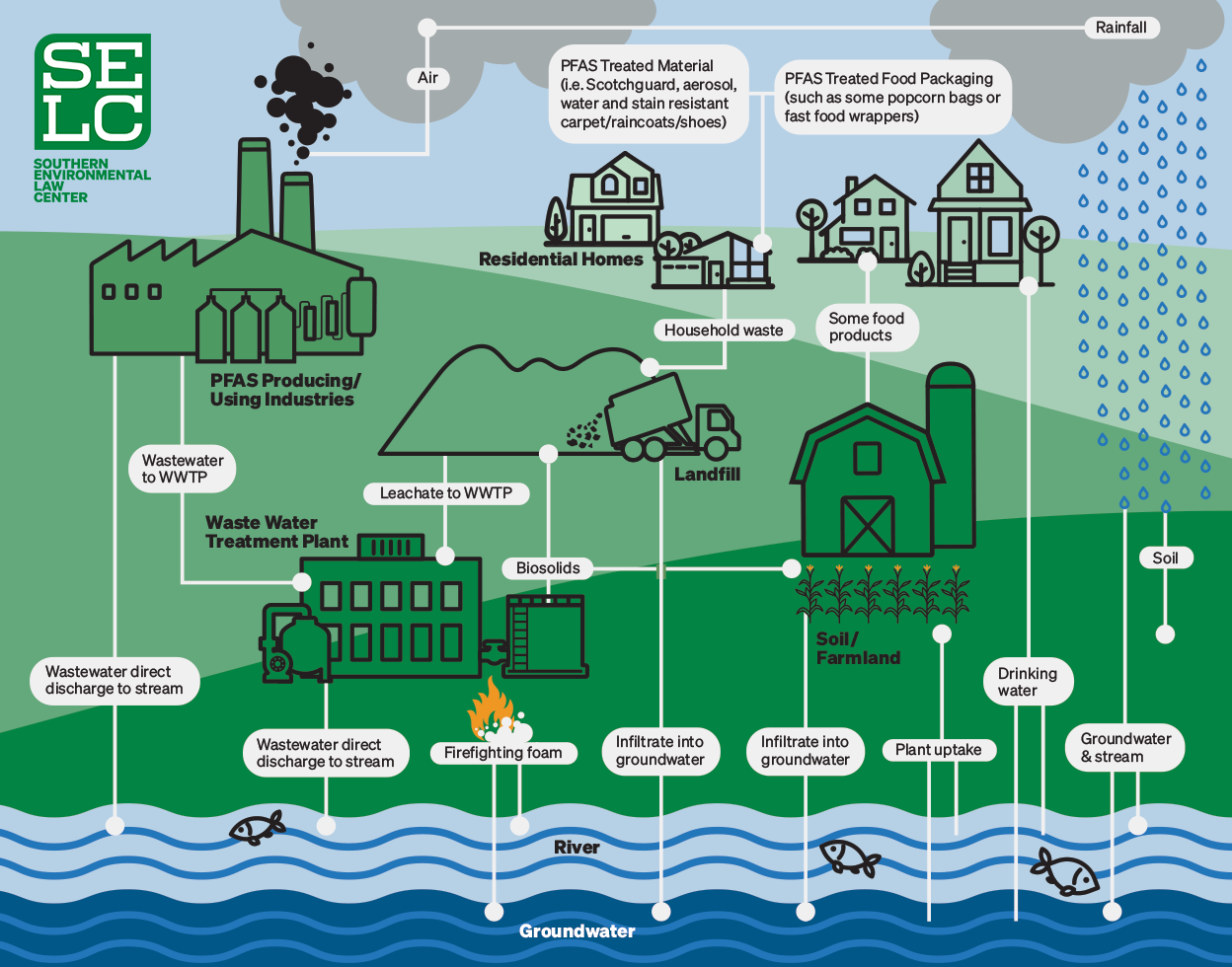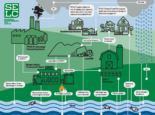Industrial chemical pollution in our water
Our communities deserve clean water that is free from industrial chemicals that affect our health, our families’ health and the health of our rivers and waterways. The number of chemicals created and in use by industry—even if not proven to be safe—that wind up polluting our water and communities has grown dramatically in recent decades.
Undisclosed chemical water pollution
In the United States, the Clean Water Act requires industry to disclose what pollutants it is putting into our drinking water sources. If industry does not tell permitting agencies and the public about the chemicals in its discharge, any release of the chemicals is illegal. EPA and state agencies have the authority now to stop pollution at its source, before it gets into drinking water sources or waters where we fish and swim, but too often do not require disclosure and enforce pollution controls.
As a result, these agencies allow industry to conduct dangerous experiments every day on our families and communities by discharging undisclosed and potentially toxic chemicals into our drinking water, rivers, and lakes. Such contaminants include 1,4 dioxane; bromides; and a family of thousands of synthetic or manufactured chemical compounds (including GenX) called per- and polyfluoroalkyl substances (PFAS). Increasingly, scientific studies tie these contaminants to health problems in people, but their presence is often not disclosed by industry.
Families everywhere deserve to know the streams, rivers, and lakes where we get our drinking water are safe. North Carolina’s environmental agency took a position on toxic PFAS pollution that agencies across the country and the EPA should be taking now to protect our communities—stopping pollution at its source now before it even gets into drinking water sources.
Geoff Gisler, leader of SELC’s Clean Water Program

PFAS Cycle
PFAS are a class of thousands of manufactured chemicals that have been used in products and manufacturing processes since the 1940s. Due to their extensive use, including in food packaging, waterproof and stain-resistant coatings, and personal care products, PFAS are now present in our water, soil, air, and food. Some of the most acute PFAS pollution issues come from facilities that manufacture PFAS or use PFAS in industrial processes—such as the Chemours plant in North Carolina—and airports and military bases where PFAS-containing firefighting foam has been sprayed.
Stopping GenX chemical water pollution & harm
Following a lawsuit against the Chemours Company for its years of GenX and other PFAS pollution in eastern North Carolina, SELC and our client, Cape Fear River Watch, continue to enforce the terms of a resulting consent order with the N.C. Department of Environmental Quality and Chemours to stop the PFAS pollution at its source and ensure the Cape Fear River is safe for downstream communities. The river is the drinking water source for Wilmington, N.C., and Pender and Brunswick Counties downstream. GenX and other PFAS were found in their treated drinking water at high levels.
Similarly, spikes of a known cancer-causing chemical in the treated drinking water for Eden and Madison, N.C., were traced back to bromides from a leaking, unlined coal ash lagoon at Duke Energy’s Belews Creek site next to the Dan River. In 2015, the U.S. Attorney secured a criminal plea deal by Duke to help downstream communities and, in January 2020, we secured removal of the coal ash from the lagoon to dry, lined storage away from the river and lake.
Even though many of these industrial chemicals are dangerous individually, the bigger threat is that communities are never exposed to just one, but often have repeated exposure to multiple toxic pollutants. Landfills, hazardous waste sites, and other industrial facilities often affect the same communities. Far too often, they are concentrated in communities of color and low-income communities.
Industrial polluter accountability now
Failing to hold polluters accountable means that downstream communities are forced to spend millions of dollars testing, identifying, and filtering out avoidable pollution from upstream industries. Communities downstream should not have to suffer the health consequences of avoidable pollution from upstream industries.
Industrial pollution must be stopped at its source so the polluter bears the burden and cost of it, not the families and communities nearby and downstream. Our litigation against Chemours and our advocacy were reflected in EPA’s new National Pollutant Discharge Elimination System (NPDES) guidance to states in December 2022. The guidance directs states to enforce the Clean Water Act to stop PFAS pollution at its source and hold polluters accountable. We now look forward to working with state agencies across our region to ensure that permits under the Clean Water Act protect our water from these and other industrial chemicals.
Recent news on industrial chemical pollution
Wins for industrial chemical pollution
Additional Resources

